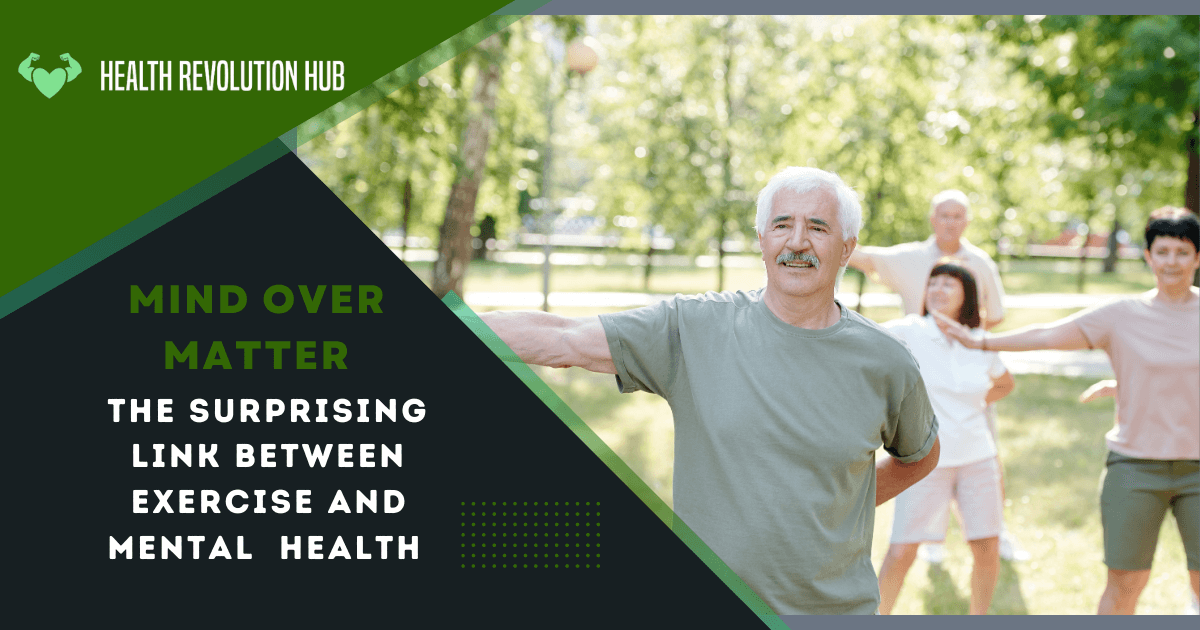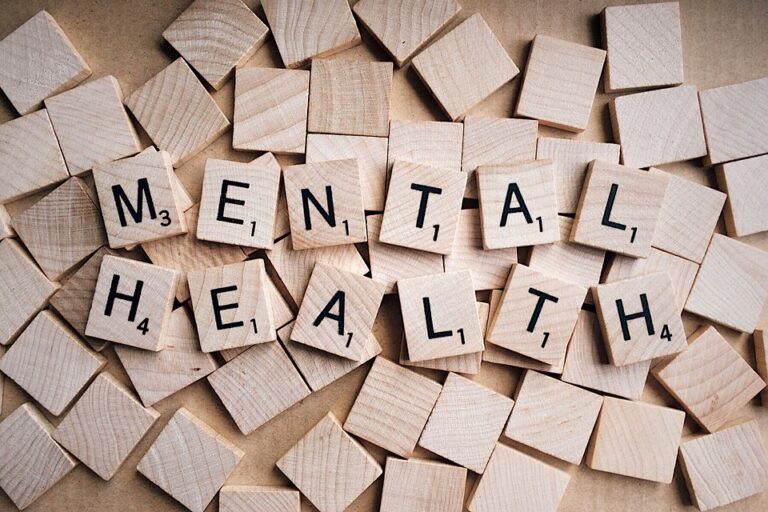Introduction
Step into a world where exercise goes beyond physical fitness and dives into the depths of mental well-being. Prepare to be amazed as we unravel the surprising link between exercise and various mental health disorders. With mental health concerns on the rise, it’s time to discover the incredible power of physical activity in managing and treating these challenges The relationship between exercise and mental health is becoming increasingly recognized by mental health professionals. This article will explore the surprising link between exercise and various mental health disorders.
Overview of the Connection Between Mental Health and Exercise
Imagine this: one in five adults worldwide battles mental health disorders each year, with approximately one in 25 facing severe conditions that hinder their daily lives. But fear not, for exercise holds the key to unlocking a healthier mind. Join us on this journey as we delve into the science behind exercise and its profound impact on the brain. Brace yourself for a wealth of knowledge on how exercise can be a game-changer in managing and treating mental health disorders.
Statistics on the Prevalence of Mental Health Disorders
Mental health disorders affect roughly 1 in 5 adults each year, and approximately 1 in 25 adults experience a severe mental health disorder that limits their ability to carry out daily activities.
Brief Explanation of the Purpose of the Article
This article aims to provide a detailed understanding of the science behind exercise and its effects on the brain, as well as outlining the specific ways in which exercise can help to manage and treat various mental health disorders.
The Science of Exercise and the Brain
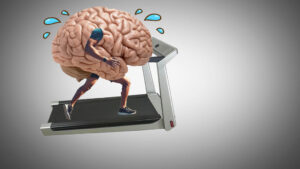
The Biological Basis of Exercise and Mental Health
One of the primary ways in which exercise benefits mental health is through its impact on brain chemistry. Regular physical exercise can cause the release of neurotransmitters and hormones that affect mood, energy levels, and cognitive function.
The Effects of Exercise on Neurotransmitters and Hormones in the Brain
Exercise has been shown to increase levels of serotonin, dopamine, and norepinephrine in the brain. These are neurotransmitters that play important roles in mood regulation and energy levels, among other things. Exercise also causes the release of endorphins, which can help to reduce pain and improve mood.Let’s begin with the biological marvels that occur when we engage in physical activity. Picture this: regular exercise triggers the release of neurotransmitters and hormones that wield the power to reshape our mood, energy levels, and cognitive abilities. We’re talking about a surge in serotonin, dopamine, and norepinephrine—the very chemicals that influence our emotions and vitality. And there’s more! Exercise also unleashes endorphins, those magical compounds that reduce pain and uplift our spirits.
How Exercise Promotes Neurogenesis and Neuroplasticity
Brace yourself for another mind-blowing revelation: exercise has the ability to stimulate the growth of new brain cells and reshape the brain’s architecture. It’s a phenomenon known as neurogenesis and neuroplasticity. By embracing regular exercise, we can enhance our cognitive function, boost our mood, and enjoy a life of boundless vitality.
Regular exercise has been shown to increase the rate of neurogenesis (the growth of new brain cells) and neuroplasticity (the ability of the brain to change in response to new experiences). This can result in increased cognitive function and improved mood.
Exercise and Depression: A Powerful Antidepressant
The Relationship Between Exercise and Depression
Now, let’s focus on one of the most prevalent mental health disorders: depression. Picture a world where exercise stands shoulder to shoulder with traditional antidepressant medication. It’s not just a dream; it’s a reality supported by scientific studies. . I am talking about elevated levels of serotonin, dopamine, and norepinephrine—those very compounds that regulate our mood. Not only that, exercise improves sleep patterns, a vital component in the battle against depression.
Scientific Studies that Support the Effectiveness of Exercise in Treating Depression
Picture this: after just 12 weeks of consistent exercise, up to 70% of participants no longer met the diagnostic criteria for depression. The secret lies in the myriad of ways exercise positively affects our brain chemistry.Numerous studies have demonstrated the effectiveness of exercise in treating depression. The Mechanisms that Make Exercise a Powerful Antidepressant

Exercise has a number of antidepressant effects, including increased levels of serotonin, dopamine, and norepinephrine, as well as increased neurogenesis and neuroplasticity. Exercise also helps to regulate sleep patterns, which can be disrupted in individuals with depression.Exercise has been shown to be an effective treatment for depression, with some experts suggesting that it could be as effective as traditional antidepressant medication in some cases.
Exercise and Anxiety: Reducing Worry and Fear

The Link Between Exercise and Anxiety
Anxiety is a mental health disorder characterized by persistent feelings of worry, fear, and apprehension.Exercise is here to save the day! By engaging in physical activity, we can reduce levels of cortisol, the notorious stress hormone that fuels anxiety. But that’s not all—exercise also increases the production of GABA, a neurotransmitter that helps us find calm amidst the storm.
How Exercise Lowers Cortisol Levels in the Brain
Exercise can help to reduce the levels of cortisol (a stress hormone) in the brain, which can help to alleviate anxiety symptoms. Exercise has also been shown to increase levels of GABA, a neurotransmitter that can help to reduce anxiety.
The Specific Types of Exercise that Help to Alleviate Anxiety
Aerobic exercises like jogging or cycling take center stage in reducing anxiety, while mindfulness-based practices like yoga work wonders for restoring peace within. Exercise has been shown to be an effective way of managing anxiety symptoms.
Exercise and Mood: Boosting Happiness and Contentment

How Exercise Impacts Mood
Let’s move on to another aspect of our mental well-being: mood. Imagine a life where exercise becomes the key to unlocking happiness and contentment. With each workout, our brain releases endorphins, those blissful chemicals that flood us with a profound sense of well-being. Outdoor activities like hiking or swimming, where nature becomes our playground, have proven to be particularly effective in boosting our mood. And if you crave human connection, team sports might just be the ticket to cultivating joy and camaraderie.
The Relationship Between Exercise and the Release of Endorphins
Endorphins are neurochemicals that are released during exercise, and are responsible for the “feel-good” sensation often associated with physical activity.
Examples of Specific Exercises that are Mood-Boosters
Outdoor activities such as hiking or swimming have been shown to be particularly effective in boosting mood, as have activities that involve social interaction such as team sports.
Exercise and Stress: Managing Tension and Pressure
How Exercise Combats Stress
let’s tackle stress head-on. Picture this: a world where exercise becomes a formidable weapon against tension and pressure. As we engage in physical activity, our brain experiences a remarkable shift. Cortisol levels—the culprit behind stress—plummet, making way for a calmer and more relaxed state of being. Exercise also activates our body’s sympathetic nervous system, enabling us to manage stress and anxiety more effectively. Exercise has been shown to be an effective way of managing stress and reducing feelings of tension and pressure.
The Physiological Changes that Occur During Exercise that Allow People to Better Manage Stress
During exercise, the body’s sympathetic nervous system is activated, which allows individuals to better manage stress and anxiety. Exercise also helps to regulate breathing patterns, which can be disrupted during times of stress.
Recommended Exercises for Stress Relief
Yoga and other forms of mindfulness-based exercise can be helpful in reducing stress, as can aerobic activities such as running or cycling.
Exercise and PTSD: Healing Trauma and Reducing Symptoms
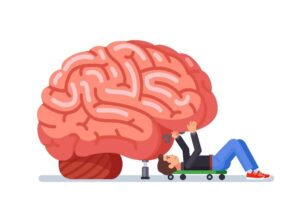
How Exercise Addresses PTSD
Post-traumatic Stress Disorder (PTSD) is a mental health disorder that can arise following exposure to a traumatic event. Exercise has been shown to be an effective way of managing PTSD symptoms.
The Therapeutic Role of Exercise in Addressing PTSD Symptoms
Exercise can help individuals with PTSD to better regulate their emotions and reduce feelings of anxiety and hypervigilance. Exercise can also promote the growth of new brain cells, which can be beneficial for individuals with PTSD.
Exercise Programs that have Proven Effective in Treating PTSD
Yoga and other forms of mindfulness-based exercise have been shown to be particularly effective in treating PTSD symptoms, as have other forms of aerobic exercise such as running or swimming.
Exercise and Schizophrenia: Enhancing Cognitive Functioning

The Benefits of Exercise for Schizophrenia
Schizophrenia is a mental health disorder characterized by cognitive deficits and hallucinations. Exercise has been shown to be an effective way of improving cognitive functioning in individuals with schizophrenia.
How Exercise Can Improve Cognitive Functioning in Individuals with Schizophrenia
Exercise has been shown to increase levels of neuroplasticity in the brain, which can help to improve cognitive functioning. Exercise can also help to increase attention and focus, which can be particularly useful for individuals with schizophrenia.
Examples of Exercise Regimens that Aid in Schizophrenia Treatment
Aerobic exercise such as running or cycling, as well as yoga and other forms of mindfulness-based exercise, have been shown to be effective in treatment for schizophrenia.
Exercise and Dementia: Slowing Cognitive Decline
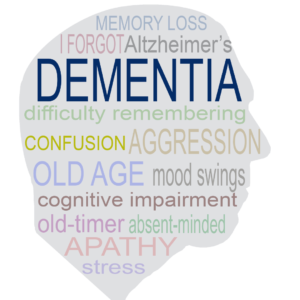
The Link Between Exercise and Dementia Prevention
Dementia is a condition characterized by cognitive decline, and is often associated with aging. Exercise has been shown to be an effective way of preventing cognitive decline and reducing the risk of developing dementia.
Research Supporting the Effectiveness of Exercise in Improving Cognitive Functioning
Studies have shown that exercise can improve cognitive functioning in individuals with dementia, and may even help to slow the progression of the disease.
Types of Exercises that May be Helpful in Preventing Dementia
Aerobic exercise such as running or cycling, as well as activities that require mental engagement such as dancing or playing music, have been shown to be particularly effective in preventing dementia.
Exercise and Addiction: Overcoming Dependency
How Exercise Can Play a Role in Addiction Recovery
Exercise can be an effective way of reducing cravings for addictive substances, as well as helping to manage withdrawal symptoms.
The Physiological Impact of Exercise on the Brain’s Reward System
Exercise has been shown to release endorphins in the brain, which can help to reduce cravings for addictive substances. Exercise can also promote the growth of new brain cells, which can be beneficial for individuals recovering from addiction.
Examples of Exercise Programs that are Effective in Treating Addiction
Aerobic exercise such as running or cycling, as well as yoga and other forms of mindfulness-based exercise, have been shown to be particularly effective in treating addiction.
Exercise and Eating Disorders: Healing the Mind and Body
How Exercise Can be Integrated into Treatment for Eating Disorders
Exercise can be a helpful component of treatment for individuals with eating disorders, as it can promote a healthier relationship with the body and reduce anxiety and negative thoughts regarding physical appearance.
The Role of Exercise in Promoting Body Positivity
Exercise can help individuals to feel more confident and positive about their physical bodies, which can be beneficial for individuals with eating disorders.
Specific Exercises that May be Useful in Addressing Eating Disorders
Aerobic exercise such as running or cycling, as well as activities that encourage body awareness and self-care such as yoga, can be helpful in treating eating disorders.
Exercise and Sleep: Improving Sleep Quality
The Connection Between Exercise and Sleep
Regular exercise has been shown to be an effective way of improving sleep quality and reducing the risk of sleep disorders.
Research on the Role of Exercise in Improving Sleep Quality
Studies have shown that exercise can improve sleep quality and help individuals to fall asleep more quickly and stay asleep longer.
Best Practices for Timing and Duration of Exercise to Promote Better Sleep
Exercise should ideally be done in the morning or early afternoon, as exercise done too close to bedtime can interfere with the ability to fall asleep. Exercise should also be performed for at least 30 minutes per day, five days per week.
Exercise and Attention Deficit Hyperactivity Disorder (ADHD): Improving Focus and Concentration
The Utility of Exercise in Managing ADHD Symptoms
Exercise can be a helpful way of managing symptoms associated with ADHD, including hyperactivity, impulsiveness, and poor focus and concentration.
Evidence-Supported Mechanisms of Exercise for Improving Attention and Focus
Exercise has been shown to increase levels of dopamine in the brain, which can improve attention and focus. Exercise also promotes neuroplasticity, which can help individuals to adapt to new situations more effectively.
Types of Exercises that are Beneficial for Individuals with ADHD
Aerobic exercise such as running or cycling, as well as activities that require focus and concentration such as martial arts or dancing, can be particularly beneficial for individuals with ADHD.
Exercise and Multiple Sclerosis: Managing Symptoms
The Relationship Between Exercise and Multiple Sclerosis
Multiple Sclerosis (MS) is a neurological disorder that affects the brain and spinal cord. Exercise can be helpful in managing symptoms associated with MS.
Examples of Exercises that can Alleviate MS Symptoms
Physical therapy exercises, such as balancing exercises and strength training, can be particularly effective in alleviating MS symptoms. Yoga and other forms of mindfulness-based exercise can also be beneficial for individuals with MS.
How Exercise Can be Integrated into a Broader Treatment Plan for MS
Exercise can be combined with traditional medical treatments for MS to provide a comprehensive plan for managing symptoms and improving quality of life.
Exercise and Stroke: Promoting Recovery
The Link Between Exercise and Stroke Recovery
Exercise has been shown to be effective in promoting recovery from stroke, as it can help individuals to regain motor function and improve overall health.
The Benefits of Exercise in Improving Post-Stroke Motor Function
Exercise can help individuals to regain strength and mobility in affected limbs, as well as improving cardiovascular health and reducing the risk of future strokes.
Recommended Exercises to Aid in Post-Stroke Rehabilitation
Physical therapy exercises, such as range-of-motion exercises and strength training, can be particularly effective in aiding in post-stroke rehabilitation. Aerobic exercise such as walking or cycling can also be beneficial.
Exercise and Parkinson’s Disease: Slowing Degeneration
The Role of Exercise in Parkinson’s Disease Treatment
Parkinson’s Disease is a neurological disorder that affects movement and is characterized by tremors and stiffness. Exercise can be helpful in slowing the degenerative effects of the disease.
Research on the Effects of Exercise in Delaying Parkinson’s Disease Progression
Studies have shown that exercise can help to reduce symptoms associated with Parkinson’s Disease, as well as slowing the rate of disease progression.
Recommended Exercises to Slow Parkinson’s Disease Degeneration
Physical therapy exercises, such as stretching and strength training, can be particularly effective in slowing Parkinson’s disease degeneration. Tai chi and other forms of mind-body exercise can also be beneficial.
Exercise and Chronic Pain: Coping with Discomfort
The Connection Between Exercise and Chronic Pain Management
Exercise can be helpful in managing chronic pain, as it can promote strength, mobility, and overall health.
Evidence-Supported Mechanisms of Exercise for Reducing Pain
Exercise has been shown to help reduce pain by increasing endorphin levels in the brain, as well as promoting the growth of new brain cells and increasing neuroplasticity.
Exercises that Can Help Individuals Cope with Chronic Pain
Stretching and strength training exercises can be particularly effective in managing chronic pain, as can low-impact aerobic exercises such as swimming or cycling.
Exercise and Aging: Promoting Overall Health
The Role of Exercise in Promoting Healthy Aging
Exercise can be an effective way of promoting overall health and well-being in older adults, as it can help to maintain muscle mass, reduce the risk of chronic disease, and improve cognitive function.
The Physiological Benefits of Exercise on the Aging Brain and Body
Exercise has been shown to promote the growth of new brain cells, as well as improving cardiovascular health and reducing the risk of chronic disease.
Types of Exercises that are Particularly Beneficial for Older Adults
Low-impact aerobic exercise such as swimming or cycling can be particularly beneficial for older adults, as can activities that promote balance and strength such as yoga or Tai Chi.
Barriers to Exercise: Overcoming Obstacles
Common Obstacles to Starting or Maintaining an Exercise Regimen
Many individuals face obstacles to starting or maintaining an exercise regimen, such as lack of time, lack of motivation, or physical limitations.
Strategies for Overcoming Obstacles to Exercise
Setting realistic goals, finding a supportive community, and focusing on the benefits of exercise can be helpful in overcoming obstacles to exercise.
Summary
Summary of Key Points
Exercise has a powerful impact on mental health, with numerous benefits for managing and treating mental health disorders.
Recapitulation of the Connection Between Exercise and Mental Health
Exercise can promote the release of neurotransmitters and hormones that affect mood, energy levels, and cognitive function. Exercise can also promote the growth of new brain cells and improve overall brain health.

